Charger Soshine SC-F3
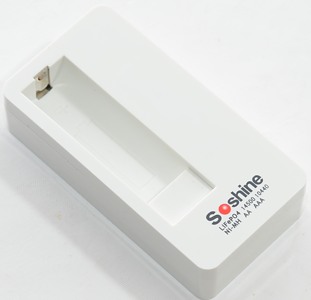
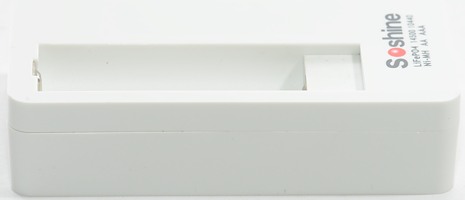
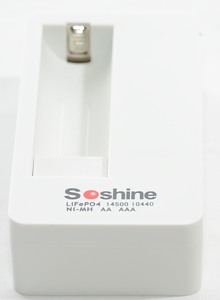
Soshine makes a couple of chargers of varying quality, this charger is a single channel charger for NiMH and the LiIon type called LiFePO4 or IFR (This is clearly marked on the charger), i.e. it cannot be used for the LiIon batteries that needs 4.2 volt charge, but only for LiIon batteries marked 3.0 or 3.2 volt. The charger is very limited in battery size and must be powered from usb.
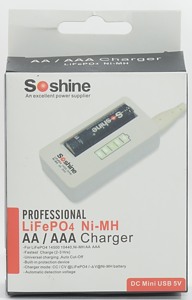

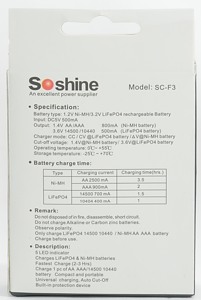

The charger arrives in a small cardboard box with specifications on.
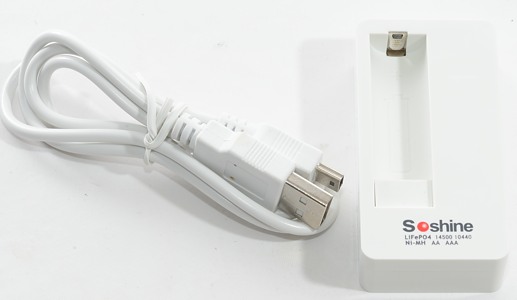
Contents is very limited, only charger and a usb cable.
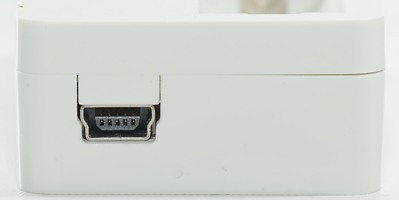
The power input is a mini usb connector, i.e. a phone charger does not fit.
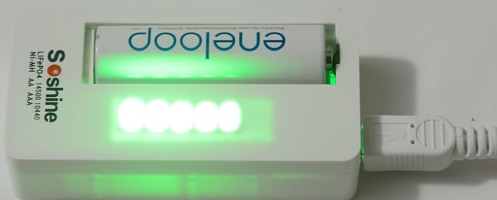
The charger has 5 green leds hidden below the white plastic, one of them can also be red.


Both the plus and minus connection has a small bump, making the work with flat top/bottom batteries. The minus connection can slide back, making the slot long enought for a AA battery.
The charger can handle batteries from 43mm to 50.6mm and with up to 14.6mm in diameter. This fits exactly with AA that has a maximum length of 50.5mm and maximum diameter of 14.5mm. The AAA has a minimum length of 43.3mm.


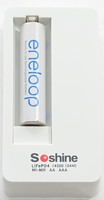
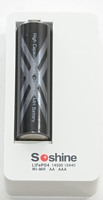
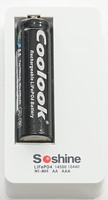
Measurements
- Without power connected the charger will discharge with 1.7mA at 1.5V (NiMH) and 4.2mA at 3.4V (LiFePO4)
- With power connected the charger will discharge with 2.5mA at 1.5V (NiMH) and 8mA at 3.5V (LiFePO4)
- The charger will detect a battery at 0.65 volt.
- At 2.6 volt or above the charger uses LiFePO4 mode. The charger will apply current at lower voltages, but will go into fault, if the voltage stays low.
- Power cycling or reinsertion of NiMH will restart charging.
- Power cycling or reinsertion of LiFePO4 will restart charging.
- If the charger detect a faulty battery the led flashes red/green.
- Without a battery in the cradle one red led is on.
- When battery is put in the leds fast run from 1 to 5 leds on for some time.
- When charging it will start with 1 led one and when the battery is full all 5 leds will be on, the topmost led will be flashing.
- When battery is full all 5 leds will be steady on.
LiIon batteries
.png)
The charger charges to 3.7 volt, not the usual 3.6 volt and it restart when the voltage drops after charging.
The charger uses less than 0.5A from usb, making nearly all types of usb power supplies useable for it.
a.png)
Same curve as above, but without the DC input current (i.e. usb current).
The specifications on the box says the charger need 1.5 hour to charge a LiFePO4 battery, this matches with the battery I have used for test.
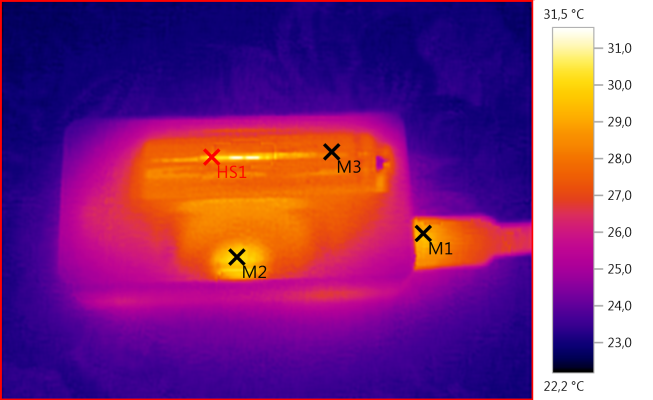
M1: 29,3°C, M2: 29,9°C, M3: 27,6°C, HS1: 31,5°C
With the fairly low charge current, there is not generated much heat.
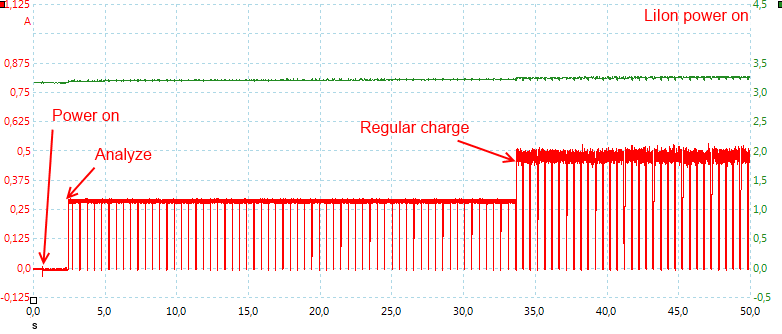
When the charger is powered on, it first charges with a low current to detect chemistry (NiMH or LiIon), the increased to full charge current.
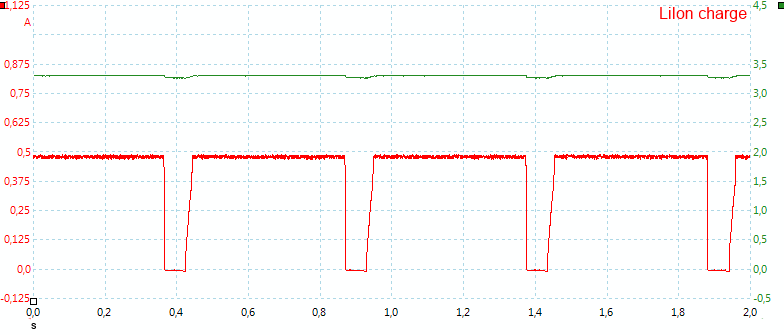
The charger is pulsing, probably to measure the voltage with current off, this is generally not a good idea with LiIon.
NiMH batteries
.png)
The charger uses higher charge current for NiMH, but the usb current is still below 0.5A. The termination is to early to look like -dv/dt.
The charger uses a trickle charge in the 10mA to 20mA range.
.png)
With AAA it looks the same way,
.png)
As does a 2500mAh battery. According to specifications this is supposed to take 3.5 hours, as can be seen on the curve is fairly accurate.
.png)
Trying to charge a full battery is detected in about 11 minutes.
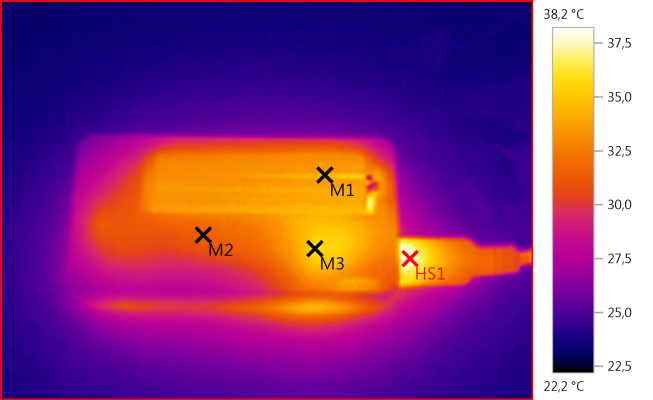
M1: 34,6°C, M2: 31,4°C, M3: 35,8°C, HS1: 38,2°C
For NiMH the current is higher and the voltage drop in the charger is higher, this means more heat.
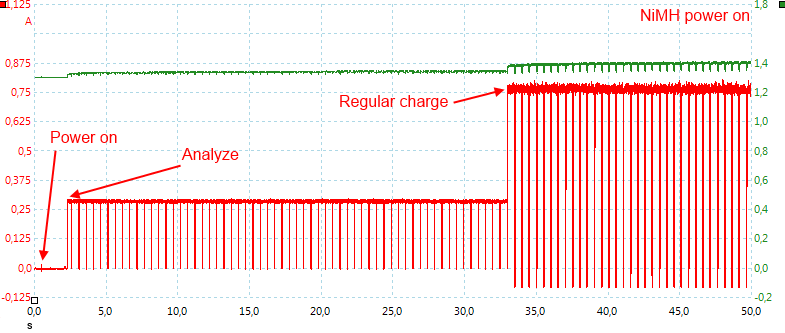
The startup looks the same as for LiIon, only the voltage is only NiMH level.
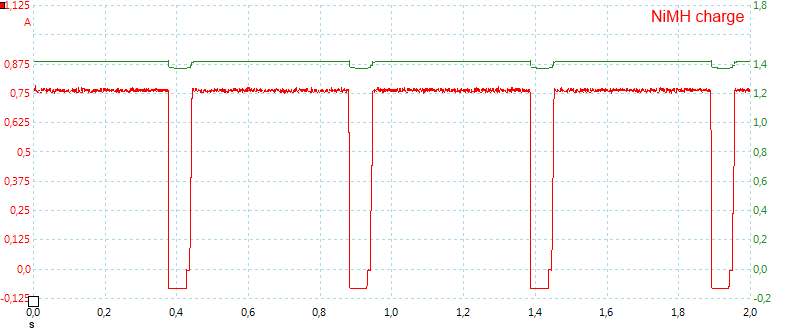
Again the charger is pulsing and this time with a slightly negative puls
Conclusion
This charger does its job, but could be better. The restart on LiIon batteries is not very good and the maximum voltage termination on NiMH is not the best algorithm.
Notes
The charger was supplied by a reader for a review.
Here is an explanation on how I did the above charge curves: How do I test a charger

















.png)
a.png)



.png)
.png)
.png)
.png)


